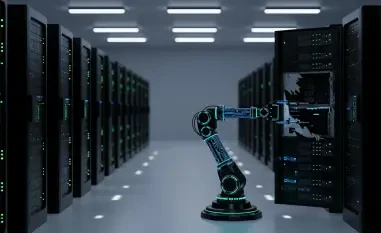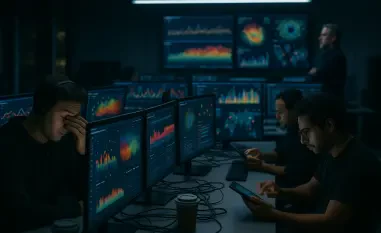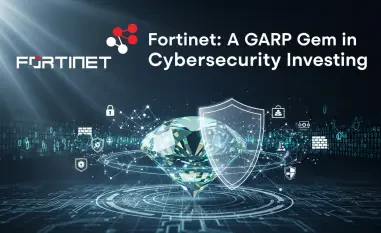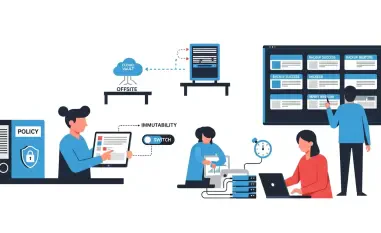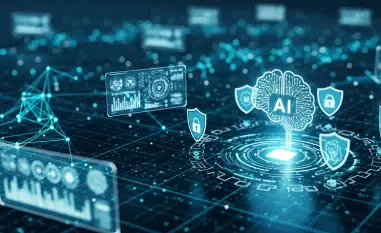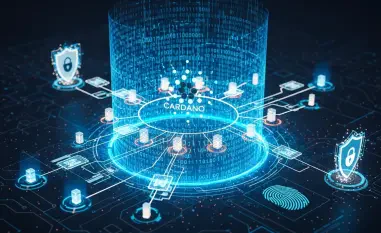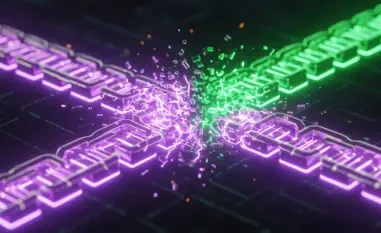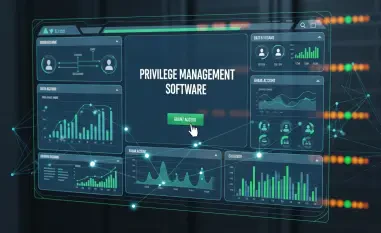This guide aims to equip readers with a comprehensive understanding of how Secure Remote Access (SRA) serves as a critical shield for industrial systems in an era of increasing cyber-physical connectivity, ensuring the protection of vital infrastructure. By following the detailed steps and insights provided, readers will learn to implement SRA effectively to safeguard critical infrastructure, ensure operational continuity, and meet stringent compliance standards. The purpose of this resource is to address the growing vulnerabilities in industrial environments where digital and physical threats converge, offering actionable strategies to protect legacy systems, secure third-party interactions, and maintain resilience against evolving cyber risks. The importance of this topic cannot be overstated, as a single breach in an industrial facility can disrupt entire sectors, from energy grids to transportation networks, highlighting the urgent need for robust remote access security.
Consider a scenario where a major power grid experiences a cyberattack through an unsecured remote connection, leading to widespread outages affecting millions of people. Such incidents are no longer theoretical, as the integration of operational technology (OT) with information technology (IT) has expanded the attack surface for industrial systems. This guide delves into the mechanisms of SRA, illustrating how it prevents unauthorized access, mitigates risks in legacy infrastructure, and supports the secure operation of critical facilities like AI data centers. The convergence of digital and physical threats demands more than traditional security measures, and this resource provides a roadmap for organizations to adapt to these challenges with confidence.
The value of SRA lies in its ability to balance operational efficiency with stringent security protocols. As industrial environments increasingly rely on remote maintenance and third-party vendors, the risk of cyberattacks escalates, making robust access controls essential. This guide not only outlines the protective mechanisms of SRA but also emphasizes its role as a strategic asset for maintaining compliance and reducing downtime. Readers will gain insights into navigating the complexities of a cyber-physical world, ensuring that their systems remain secure regardless of how or where access is granted.
The Vital Role of Secure Remote Access in Industrial Security
Secure Remote Access stands as a cornerstone in the defense of industrial systems, particularly as the boundaries between physical and digital environments continue to blur. The convergence of IT and OT systems has revolutionized industrial operations, enabling real-time monitoring and efficiency gains, but it has also introduced significant vulnerabilities. SRA emerges as a vital solution to protect critical infrastructure from cyber threats that can exploit remote connections, ensuring that operational resilience is maintained even in the face of sophisticated attacks.
The unique challenges of a cyber-physical world require tailored security approaches, as traditional physical defenses alone cannot address digital entry points. Insights from industry leaders underscore that SRA bridges this gap by enforcing strict access controls and continuous monitoring, safeguarding systems whether access occurs on-site or remotely. This approach is particularly crucial for industries managing legacy infrastructure, where outdated technology often lacks built-in security features, making SRA an indispensable tool for modernization without compromising safety.
Beyond immediate protection, SRA offers strategic value by enabling organizations to adapt to an interconnected landscape without sacrificing security. Its implementation supports safe remote maintenance, reduces the risk of costly downtime, and ensures compliance with industry regulations. As cyber threats grow in complexity, SRA provides a proactive framework to maintain trust in industrial operations, positioning it as a fundamental element of long-term security planning.
The Convergence of Physical and Digital Threats in Industry
The industrial sector has undergone a profound transformation with the integration of OT and IT systems, driving efficiency but also exposing new vulnerabilities. Historically, operational technology operated in isolation, protected by physical barriers and limited connectivity. However, the push for digitalization has connected these systems to broader networks, creating opportunities for cyber attackers to exploit digital access points without ever breaching a physical perimeter.
This expanded attack surface means that threats are no longer confined to tangible breaches but include sophisticated malware, ransomware, and insider risks introduced through remote connections. The reliance on third-party vendors for maintenance further complicates the security landscape, as external access can become a gateway for malicious activity if not properly managed. Traditional physical security measures, such as guards and locks, fall short in addressing these digital risks, necessitating a more comprehensive approach.
The shift to connectivity has also highlighted the fragility of legacy systems, many of which were designed decades ago without cybersecurity in mind. As these systems are linked to modern IT networks, they become prime targets for exploitation, underscoring the urgent need for protective mechanisms that can adapt to both old and new technologies. This evolving threat environment makes it clear that industrial security must evolve to encompass both physical and digital domains for true resilience.
Key Mechanisms of Secure Remote Access for Industrial Protection
Establishing Compatibility with OT Environments
Adapting to Legacy System Limitations
Industrial systems often rely on legacy equipment that predates modern cybersecurity standards, posing significant challenges for secure integration. SRA solutions must be meticulously designed to operate within these OT environments, ensuring that security protocols do not disrupt critical operations. Compatibility means tailoring access controls to accommodate outdated protocols while still enforcing robust defenses against unauthorized entry.
The limitations of legacy infrastructure, such as the absence of encryption or authentication mechanisms, require specialized approaches to secure remote interactions. Implementing SRA in these contexts involves deploying lightweight security layers that do not overburden older systems, alongside customized configurations to address specific vulnerabilities. This careful balance ensures that even the most antiquated equipment can be protected without necessitating costly overhauls.
Addressing these challenges also involves training personnel to understand the unique constraints of OT systems when using SRA tools. By fostering awareness of how security measures interact with legacy technology, organizations can prevent misconfigurations that might expose weaknesses. This proactive adaptation is essential for maintaining operational integrity while safeguarding against digital threats in industrial settings.
Implementing Zero Trust Principles
Verifying Every Access Point
A fundamental component of SRA is the adoption of zero trust principles, which operate on the premise that no user or device should be inherently trusted, regardless of their credentials or location. This model requires rigorous verification for every access attempt, creating multiple layers of defense against potential breaches. In industrial environments, where a single compromised connection can have catastrophic consequences, zero trust is a non-negotiable standard.
Continuous authentication plays a pivotal role in this approach, particularly for third-party vendors who frequently require remote access for maintenance tasks. By verifying every access point in real time, SRA ensures that even trusted external partners must prove their identity and intent at every step. This minimizes the risk of stolen credentials or insider threats disrupting critical systems, maintaining a high level of security across all interactions.
The zero trust framework also extends to monitoring session behavior, ensuring that any anomalous activity is flagged and addressed immediately. This dynamic verification process adapts to the evolving nature of cyber threats, providing industrial facilities with a resilient shield against unauthorized access. Implementing such measures builds confidence that remote connections remain secure under all circumstances.
Ensuring Continuous Visibility and Control
Tracking User Activity for Accountability
Real-time visibility into remote connections is a critical feature of SRA, enabling organizations to detect and respond to potential threats as they occur. Continuous monitoring tools provide detailed insights into who is accessing systems, what actions they are performing, and when these interactions take place. This level of oversight is essential for maintaining control over industrial environments where even minor disruptions can escalate into major incidents.
Tracking user activity also enhances accountability by creating detailed logs of all remote interactions, which can be reviewed for forensic analysis if a breach occurs. These records help identify the source of unauthorized access, whether it stems from malicious intent or human error, allowing for swift corrective action. Such transparency is invaluable for maintaining trust in remote operations, especially when third parties are involved.
Beyond immediate threat detection, continuous control mechanisms enable administrators to terminate suspicious sessions or restrict access based on predefined policies. This ability to intervene in real time reduces the window of opportunity for attackers, protecting critical infrastructure from prolonged exposure. By prioritizing visibility, SRA ensures that industrial systems remain under constant supervision, regardless of access location.
Meeting Industry Compliance Standards
Navigating Regulatory Requirements
Compliance with industry-specific regulations is a cornerstone of effective SRA implementation, ensuring that industrial operations align with legal and operational mandates. Standards such as ISA/IEC 62443 and NERC CIP outline stringent requirements for securing critical infrastructure, particularly in sectors like energy and utilities. Adhering to these guidelines through SRA not only protects systems but also demonstrates a commitment to best practices.
Navigating regulatory requirements involves mapping SRA capabilities to specific compliance needs, such as access control policies and audit trails. Many regulations mandate detailed documentation of security measures, making features like user activity logging and continuous monitoring essential components of a compliant framework. Meeting these standards helps avoid penalties and fosters trust among stakeholders in highly regulated industries.
Additionally, compliance through SRA supports scalability, allowing organizations to expand operations without falling afoul of evolving regulations. Regular assessments and updates to security protocols ensure that remote access solutions remain aligned with the latest requirements, providing long-term stability. This focus on regulatory adherence positions SRA as a reliable tool for maintaining both security and credibility in industrial sectors.
Core Benefits of Secure Remote Access: A Summary
The protective advantages of SRA are numerous and impactful, making it an essential component of industrial security strategies. It shields legacy systems from cyber threats by implementing strict access controls that mitigate the vulnerabilities of outdated technology. This ensures that even older infrastructure can operate securely within modern networked environments.
SRA also secures third-party interactions through zero trust verification, reducing the risk of breaches from external partners who require remote access. It enables safe remote maintenance for critical infrastructure, such as AI data centers, where physical access is often restricted. By facilitating secure troubleshooting, SRA minimizes operational disruptions in high-stakes settings.
Furthermore, SRA enhances operational continuity by reducing downtime risks associated with cyber incidents or unauthorized access. It ensures compliance with industry-specific security standards, helping organizations avoid legal repercussions and maintain trust. Collectively, these benefits underscore SRA’s role as a comprehensive solution for industrial protection.
Broader Implications and Future Trends in Industrial Cybersecurity
The adoption of SRA aligns with broader trends in industrial cybersecurity, particularly the growing reliance on AI data centers as critical infrastructure. These facilities, integral to the digital economy, face unique risks such as overheating and complex interdependencies, necessitating secure remote access for maintenance and monitoring. SRA provides a framework to address these challenges, ensuring stability across interconnected systems.
Looking ahead, the escalation of cyber threats will likely intensify, driven by increasing connectivity and the sophistication of attack methods. Industrial sectors must prepare for these challenges by investing in scalable security solutions that can adapt to emerging risks. SRA stands out as a proactive tool, capable of evolving alongside technological advancements to protect against future vulnerabilities.
Additionally, the ongoing digital transformation of critical infrastructure highlights the need for integrated security strategies that encompass both physical and digital domains. As industries continue to embrace automation and remote operations, SRA will play a central role in maintaining resilience. Its ability to secure access in a hyper-connected world positions it as a foundation for sustainable growth and safety in industrial environments.
Embracing Secure Remote Access for a Safer Tomorrow
Reflecting on the journey through this guide, it becomes evident that Secure Remote Access offers a robust defense for industrial systems, addressing vulnerabilities through meticulous steps like zero trust implementation and continuous monitoring. Each mechanism, from compatibility with legacy systems to compliance with regulations, plays a crucial part in fortifying critical infrastructure against cyber-physical threats. The process underscores the importance of adapting security measures to the unique demands of industrial environments.
Moving forward, organizations are encouraged to evaluate their existing security frameworks and identify gaps where SRA can provide enhanced protection. Exploring partnerships with cybersecurity experts to tailor solutions for specific operational needs emerges as a practical next step. This approach ensures that industrial facilities remain agile in the face of evolving risks.
Finally, staying informed about advancements in SRA technologies and regulatory changes proves vital for long-term resilience. Investing in training programs to educate staff on secure remote practices further strengthens defenses. By taking these actionable measures, industrial sectors solidify their commitment to safeguarding assets and maintaining operational stability in an increasingly connected landscape.


